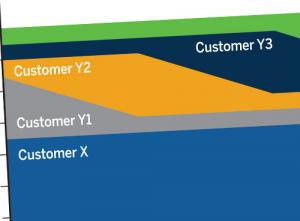What are They Good For?
Frederick Weston is a principal and director of policy at the Regulatory Assistance Project, focusing on identifying and developing responses to new trends in energy production and use, greater integration of RAP’s regional programs, and development of RAP’s staff and intellectual resources. He joined RAP in 1999 after more than a decade as an economist and hearing officer at Vermont’s PSB, and directed RAP’s China program from 2011 to 2018.
Mark LeBel is an associate with the U.S. program at the Regulatory Assistance Project, focusing on rate design and regulatory reform, including compensation for distributed energy resources, the evolution of the electricity system, and beneficial electrification. He was a staff attorney at the Acadia Center, working on electric utility reform and broader clean energy issues across the Northeast.
Demand charges, rates that are applied to an individual customer's maximum short-term usage (typically fifteen, thirty or sixty minutes) in a billing period, have existed since nearly the beginning of the electric industry. While utilities often favor them, economists have continually questioned whether demand charges are an efficient form of pricing. Alfred Kahn wrote in 1970 that they are "basically illogical."

The widespread adoption of advanced metering provides an opportunity to reconsider demand charges, even for industrial customers, and replace them with more efficient time-varying energy (kilowatt-hour) rates. With technical assistance from engineer Ronny Sandoval, we recently published a paper examining demand charges and cost causation.
Like many analysts from the past, we conclude that demand charges have only made sense as a proxy and are not a general solution for shared capacity costs. Furthermore, the changes occurring with a modern grid are undermining the conditions that made such a proxy reasonable. With a few narrow exceptions, the technological capabilities of the twenty-first century electric system are rendering demand charges obsolete.

